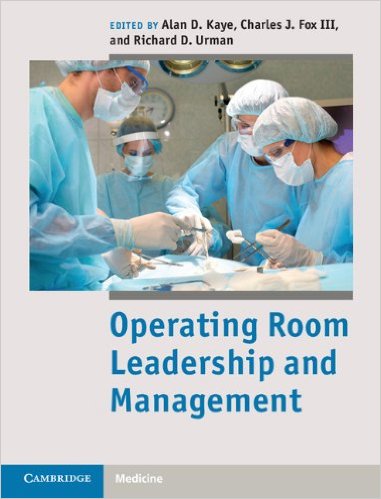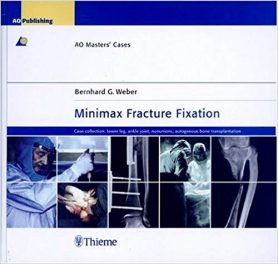 Editors: Alan D. Kaye, MD; Charles J. Fox III, MD; and Richard D. Urman, MD
Editors: Alan D. Kaye, MD; Charles J. Fox III, MD; and Richard D. Urman, MD
Publisher: Cambridge University Press – 290 pages
Book Review by: Nano Khilnani
How an operating room, and in a broader context, a hospital, should be run, is the focus of this book. The editors write in their Preface that presently, there is no evidence-based text that covers the A-to-Z of operating room management, which covers topics such as: ambulatory practice, anesthesiology, economics of medical care and services, human resources, leadership principles, metrics, pain service providers, quality assurance, recovery, and other concerns.
Forty-four people from all over the United States, most of them doctors, but also nurses, and several specialists in auditing, business management, hospital management, operating room management, public health, and allied areas, wrote the 27 chapters organized within four Sections of this book which we list below to give you an overview of its contents:
- Section 1. Leadership and Strategy
- Section 2: Economic Considerations, Efficiency, Design
- Section 3: Surgical and Anesthesia Practice Management
- Section 4: Safety, Standards, and Information Technology
The chapters discuss numerous topics, with the purpose of forging ‘the path to a successful operating room environment’ (the title of one of the chapters).
In Section 1, the four chapters include topics on decision-making, leadership, the operating room environment, and strategic planning.
In Section 2, the six chapters deal with topics such as the economics of health care and operating room productivity, taking into consideration operating room engineering, design, construction; the number of people working in the OR and at what hours (staffing and scheduling matters) and the number and type of surgeries performed. All these and other factors impact the financial performance of operating rooms.
In Section 3, the 11 chapters pertain to topics such as preoperative evaluation and management of patients; consents, service quality and standards; anesthesia practice management, including staffing, productivity measurement, and incentive plans; billing, coding, compliance, and compensation; surgical coding; post-anesthesia care; pain practice; office-based surgery practice; and the future of perioperative medicine.
In Section 4, the six chapters deal with matters such as nursing organization structure; service standards of the American College of Surgeons and the Commission for Medicare and Medicaid; safety, quality, and pay-for-performance; clinical and safety considerations for sedation; medical informatics before, during, and after operations; and simulation training to improve patient safety.
The OR is one of the largest generators of revenue in a medical center, but it can also be quite costly to staff and run it successfully, with competing demands and requirements, from patients, hospital administrators, health insurance companies, and local and federal government agencies.
The authors of the chapters discuss measures of the quality of service, outcomes of care provided, the expectations of patients and their families, and government policies, regulations, and standards. It is often difficult to reach required standards as well as to reach expectations with economic limitations, but with knowledge, leadership and teamwork, it is possible.
This evidence-based text has been written by leaders in the field of operating room and hospital management. It is a useful book for administrators, managing physicians, and medical directors for assessing specific nursing needs, preoperative patient evaluation, pain clinic management, and for financial performance measurement.
This book provides an excellent platform and springboard for the discussion and effective resolution of divergent and oftentimes conflicting issues as they relate to operating room and hospital administration and management. To operate a safe, efficient and cost-effective medical facility, this book provides you the critical information. It is a must-read.
Editors:
Alan D. Kaye, MD, PhD is Professor and Chair of the Department of Anesthesia at Louisiana State University in New Orleans, Louisiana.
Charles J. Fox III, MD is Associate Professor of Anesthesiology, Vice Chair for Research, and Director of the Perioperative Management Fellowship in the Department of Anesthesiology at Tulane Hospital and Clinic in New Orleans, Louisiana.
Richard D. Urman, MD. MBA is Assistant Professor of Anesthesia at Harvard Medical School; Director of Procedural Sedation Management and Safety; Co-Director of the Center for Perioperative Management and Medical Informatics, Department of Anesthesiology, Perioperative and Pain Medicine at Brigham and Women’s Hospital in Boston, Massachusetts. He is also Chief Executive Officer of the Institute for Safety in Office-Based Surgery, an independent non-profit organization.







